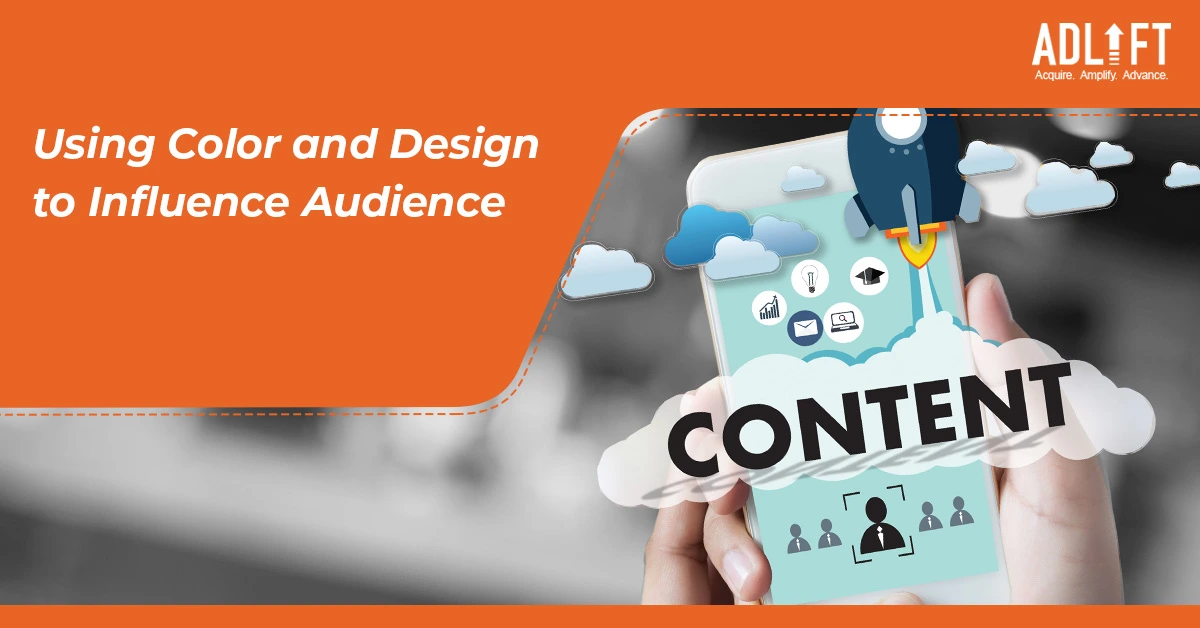The Psychology of Visual Marketing: Using Color and Design to Influence Audience

In today’s fast-paced world, where information overload is a common problem, you need to be creative in your marketing strategies to capture the attention of your target audience. Visual marketing is one such approach that has gained significant traction in recent years. It involves the use of images, videos, graphics, and other visual elements to communicate messages to customers. In this article, we’ll explore the psychology behind visual marketing and how you can use color and design to influence your audience.
The Importance of Visual Marketing
According to research, the human brain processes visual information 60,000 times faster than text. Visuals are also more memorable than words, with studies showing that people remember 80% of what they see and do compared to just 20% of what they read. Therefore, incorporating visuals in your marketing strategy can help you capture the attention of your audience and leave a lasting impression.
Color Psychology in Marketing
Color is a potent instrument in visual merchandising as it can arouse sentiment and influence conduct. Diverse hues possess distinct connotations and can be utilized to convey different messages. Below is a comprehensive analysis of some of the most prevalent hues used in marketing and their corresponding significance.
- Red: This color is associated with passion, love, excitement, and urgency. It’s often used to create a sense of urgency, such as in clearance sales and limited-time offers.
- Blue: Blue is associated with trust, security, and reliability. It’s often used in corporate branding to communicate professionalism and trustworthiness.
- Green: Green is associated with nature, growth, and health. It’s often used in marketing products that promote health and wellness, such as organic foods and natural supplements.
- Yellow: This color is associated with happiness, optimism, and youthfulness. It’s often used in marketing products that target young audiences, such as children’s toys and games.
- Orange: Orange is associated with excitement, enthusiasm, and creativity. It’s often used in marketing campaigns for products that are innovative and new.
Design Principles in Visual Marketing
In addition to color, design principles also play a crucial role in visual marketing. Here are some design principles to keep in mind when creating visual content for your marketing campaigns:
- Balance: Balance refers to the distribution of visual elements in a design. A balanced design feels stable and harmonious, while an unbalanced design feels off-kilter and unsettling.
- Contrast: Contrast refers to the difference between two or more elements in a design. It can be used to create visual interest and draw attention to specific elements.
- Proportion: Proportion refers to the relationship between the different elements in a design. It can be used to create a sense of harmony and balance in a design.
- Repetition: Repetition refers to the use of a single visual element throughout a design. It can be used to create a sense of unity and consistency.
- Alignment: Alignment refers to the positioning of visual elements in a design. Proper alignment can create a sense of order and hierarchy in a design.
Using Visual Marketing to Influence Behavior
Visual marketing can be used to influence behavior in several ways. Here are some examples:
- Attention: Using eye-catching visuals can capture the attention of your audience and draw them into your message.
- Emotion: By using color and design principles, you can evoke specific emotions in your audience, such as excitement, trust, or happiness.
- Action: Visuals can be used to encourage your audience to take a specific action, such as making a purchase or signing up for a newsletter.
- Perception: Visuals can shape your audience’s perception of your brand or product, such as making it appear luxurious or eco-friendly.
Tips for Effective Visual Marketing
To create effective visual marketing campaigns, here are some tips to keep in mind:
- Know your audience: Understand your target audience’s preferences, interests, and values to create visuals that resonate with them.
- Use high-quality visuals: Low-quality visuals can turn off your audience and make your brand appear unprofessional. Invest in high-quality images and videos to create a positive impression.
- Be consistent: Use consistent colors, fonts, and design elements across all your marketing materials to create a cohesive and memorable brand identity.
- Keep it simple: Overcomplicated visuals can confuse your audience and dilute your message. Keep your visuals simple and easy to understand.
- Test and measure: Use A/B testing to determine which visuals are most effective and adjust your marketing strategy accordingly.
Conclusion
Visual marketing is a powerful tool that can help you capture the attention of your target audience and influence their behavior. By understanding the psychology behind color and design, you can create visuals that evoke specific emotions and communicate your message effectively.
To create effective visual marketing campaigns, businesses should keep in mind their audience, use high-quality visuals, be consistent, keep it simple, and test and measure their results. With these tips in mind, you can create compelling visual marketing campaigns that drive engagement and increase conversions.

